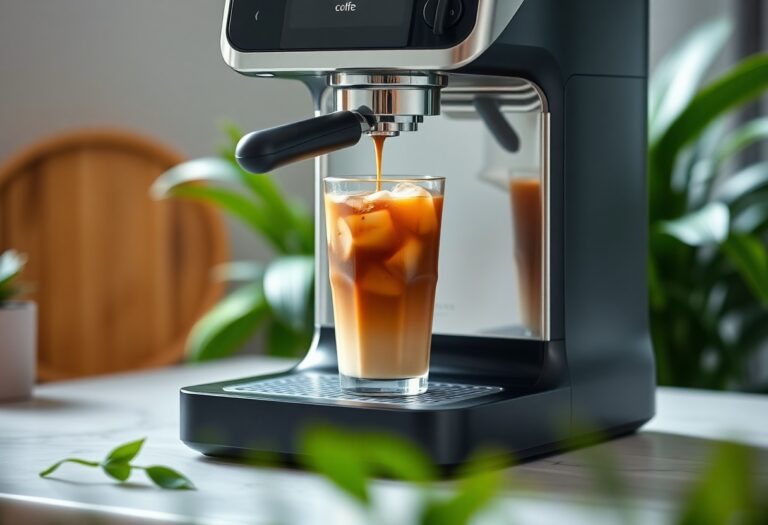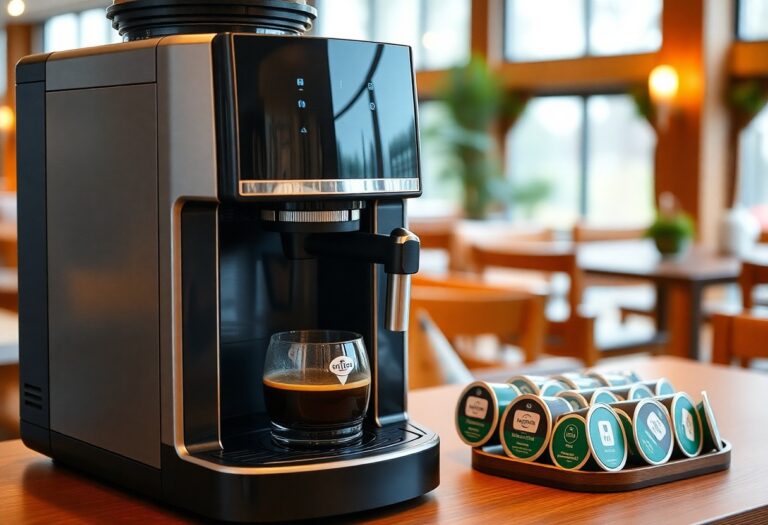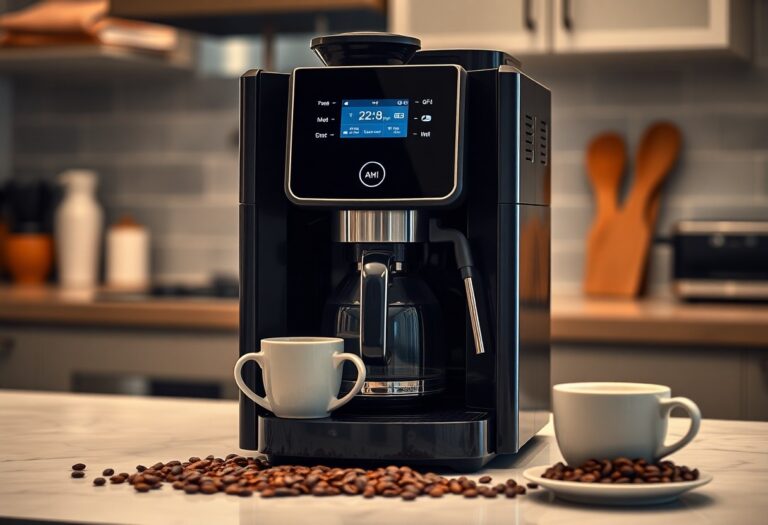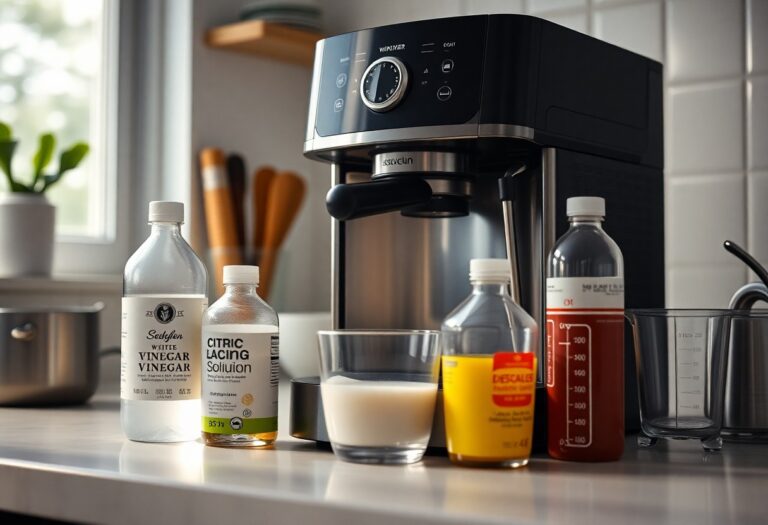What is the Best Coffee for an Espresso Machine – Bean Quality
It’s important to choose the right coffee beans for your espresso machine to ensure a rich, flavorful shot every time. The quality of the beans directly impacts the of your espresso, making it vital to select freshly roasted beans with the right grind size. Look for arabica beans, known for their superior flavor profile, and always opt for ethically sourced products. By focusing on bean freshness and proper storage, you can elevate your espresso experience and consistently impress your guests.
Key Takeaways:
- Opt for high-quality, freshly roasted beans for optimal flavor and aroma in espresso.
- Look for beans that are specifically labeled for espresso brewing to ensure compatibility.
- Consider the roast profile; medium to dark roasts often provide a balanced taste and rich crema.
- Single-origin beans can offer unique flavor notes, while blends may provide a more consistent profile.
- Store beans properly in an airtight container to maintain freshness and grind them just before brewing.

The Role of Bean Quality in Espresso
Bean quality significantly influences the flavor, aroma, and overall experience of your espresso. High-quality beans yield better extraction, resulting in a rich and balanced cup. Factors like the origin, processing method, and freshness all contribute to the taste profile of your espresso. By prioritizing quality, you’ll ensure that each shot delivers a memorable flavor experience that highlights the nuances of the coffee.
Distinguishing Bean Varieties: Arabica vs. Robusta
Arabica and Robusta are the two primary coffee bean varieties, each offering distinct flavor profiles. Arabica beans are known for their smooth, delicate taste and higher acidity, while Robusta beans tend to be stronger and more bitter with a higher caffeine content. Opting for Arabica is typically favored for espresso, as it provides a more nuanced flavor, creating a complex and enjoyable cup.
How Roasting Profiles Impact Flavor
The roasting profile of your coffee beans plays a pivotal role in determining the flavor of your espresso. Light roasts tend to preserve the bean’s natural characteristics, offering bright acidity and floral notes. Dark roasts, conversely, develop deeper flavors with chocolate and caramel undertones, but risk sacrificing some of the bean’s unique attributes. Striking the right balance among these profiles can significantly enhance your espresso experience.
Different roasting profiles result in varying extraction levels, influencing the espresso’s body and mouthfeel. For instance, a medium roast provides a balanced blend of brightness and depth, which can highlight the coffee’s origin attributes. On the other hand, a dark roast may produce more oils on the surface, adding a richer crema to the espresso. Understanding how each roast affects your drink allows you to customize and refine your espresso shots, ensuring your personal preferences are met with every brew.
The Influence of Freshness on Espresso Beans
Freshness directly impacts the flavor profile of your espresso. Beans start to lose their optimal taste within weeks of roasting due to the release of gases and important oils. Ideally, you want to use beans that have been roasted in the last two to three weeks for the best flavor. Properly sourcing your beans and ensuring you purchase them from reputable suppliers can significantly enhance your espresso experience. For tips on selecting quality coffee, check out the Best Coffee Beans For Espresso. Kev’s 2025 UK Reviews.
The Importance of Roast Date
Purchasing beans that indicate a clear roast date is important; it allows you to gauge freshness. Ideally, beans should be consumed within a month after roasting to maintain their rich flavors. Shopping from local roasters or specialty shops ensures that you’re getting beans that are often roasted in small batches, enhancing your chances of getting fresher products, which translates to better espresso.
Proper Storage Techniques to Preserve Quality
Once you have your freshly roasted beans, how you store them can be just as impactful as their roast date. Keeping your coffee in an airtight container in a cool, dark place prevents exposure to light, moisture, and air, which can lead to oxidation and staleness. Consider using a vacuum-sealed container or an opaque canister designed specifically for coffee storage to help maintain the beans’ freshness longer.
When evaluating your storage options, prioritize containers that keep out moisture and light, as both factors can quickly degrade coffee quality. Ideal storage conditions include a dark cupboard away from the stove or refrigerator. Avoid freezing or refrigerating your beans, as they can absorb odors and moisture. Furthermore, only grind what you need just before brewing to ensure maximum flavor extraction during the espresso-making process.
Sourcing the Best Beans: Ethical Considerations
Opting for ethically sourced coffee enhances your espresso experience and supports sustainable farming practices. Engaging with coffee from Best beans for espresso when getting started / where to … ensures that farmers receive fair compensation, preserving both the environment and the livelihoods of those who cultivate your coffee. Additionally, you contribute to the wellbeing of communities around the globe, making your espresso selections not only a matter of taste but of responsibility.
The Benefits of Fair Trade and Direct Sourcing
Choosing Fair Trade or direct-sourcing options means you support farmers who prioritize quality and sustainability over mass production. These certifications ensure that producers receive fair compensation, which can enhance the quality of their beans and promote better farming practices. You’ll find that this commitment often translates to superior flavor in your espresso, making each sip not just enjoyable but also ethically rewarding.
Regional Differences: A Journey through Coffee Terroirs
Exploring the regional differences in coffee can help you discover unique flavor profiles that enhance your espresso experience. Coffee terroirs, or the unique environmental factors that affect coffee cultivation, influence the taste of the beans. For instance, beans from Ethiopia often boast bright acidity and floral notes, while Colombian beans typically exhibit a balanced sweetness with a chocolate undertone. By understanding these regional distinctions, you can select beans that best complement your personal taste preferences.
Diving deeper into coffee terroi shows that factors like altitude, climate, and soil composition play significant roles in bean characteristics. For example, beans grown at higher elevations tend to develop more complex flavors, as the cooler temperatures slow the maturation process. This results in denser beans with concentrated oils contributing to a richer espresso. Similarly, regions like Sumatra produce earthy, full-bodied flavors due to their unique growing conditions. Educating yourself about these differences allows you to appreciate the nuances of your espresso while narrowing down your options for the best beans tailored to your palate.
Brewing Techniques that Enhance Bean Quality
Enhancing bean quality during brewing involves several techniques that optimize flavor extraction. Mastering the right grind size, managing water temperature, and employing the correct pressure are all significant aspects of this process. Adjusting these elements can draw out the best flavors from your chosen beans while minimizing any undesirable notes. Optimizing these factors ensures that every cup of espresso reflects the true essence of your carefully selected coffee beans.
Grind Size and Its Impact on Extraction
The grind size of your coffee beans holds significant weight in the extraction process. Finer grinds create more surface area, allowing for quicker extraction, while coarser grinds yield a slower process. A balance is necessary; too fine can lead to bitterness, while too coarse may result in a sour taste. Ideally, aiming for a grind size similar to table salt is a good rule of thumb for espresso.
Water Quality and Temperature Considerations
Water quality and temperature heavily influence the extraction of flavors from the coffee. Using filtered water reduces impurities that can affect taste, while maintaining a temperature between 195°F to 205°F (90°C to 96°C) is ideal for optimal extraction. This range ensures that you extract the coffee’s necessary oils and flavors without burning or under-extracting the beans.
Water Quality and Temperature Considerations
| Water Quality | Filtered or bottled water is preferred. |
| Temperature Range | 195°F – 205°F (90°C – 96°C) for best extraction. |
| Potential Issues | Hard water can lead to scale build-up. |
Utilizing water with low mineral content improves the flavor profile of your espresso. High levels of chlorine or other contaminants can result in a flat or off-putting taste. Besides choosing the right water, it’s vital to heat it correctly; too hot can scorch the coffee, while too cool can under-extract it, leading to a lack of flavor. Experimenting within the recommended temperature range allows you to discover the sweet spot that brings out the best in your beans.
Water Temperature and Quality Breakdown
| Key Component | Details |
| Filtered Water | Enhances clarity and flavor without impurities. |
| Recommended Temperature | 195°F – 205°F for optimal brew. |
| Risk of High Calcium Content | Can create scale build-up in espresso machines. |

Trends in Coffee Selection: Specialty Beans and Beyond
The coffee landscape has evolved, embracing a wave of specialty beans that highlight unique flavors and diverse origins. These beans, often sourced from specific farms, allow for a more nuanced extraction during brewing, creating a distinct profile that can enhance your espresso experience. Coffee enthusiasts increasingly seek out these specialty offerings, with growing interest in micro-lots and ethically sourced beans that tell a story behind every cup.
The Rise of Single-Origin Coffees
Single-origin coffees have surged in popularity, capturing your attention with their ability to deliver pronounced flavors that reflect a region’s unique terroir. Sourced from one location, these beans allow you to explore various taste notes that might include everything from fruity to nutty undertones, offering a more personal connection to the coffee’s origin. This trend has turned many coffee drinkers into aficionados, eager to learn about the specific farms and processing methods that shape their favorite brews.
Blends vs. Single-Origin: Finding Your Perfect Cup
Choosing between blends and single-origin coffees often depends on your taste preference. Blends are meticulously crafted to achieve a balanced flavor profile that appeals to a wider audience, while single-origin coffees invite you to discover specific tastes tied to their locale. Each approach has merit, with blends often providing consistency and familiarity, whereas single-origins deliver diversity and complexity in every sip.
Exploring blends versus single-origin coffees can transform your espresso experience. Blends are typically designed to offer a well-rounded flavor, ensuring a smooth and approachable cup, while single-origins can whisk you away on a flavor journey through their unique tasting notes. For instance, a blend may include beans from East Africa and South America to balance acidity and richness, whereas a single-origin Ethiopian coffee may wow you with its vibrant floral and berry notes. Ultimately, experimenting with both will help you discover your personal preferences and enhance your coffee repertoire.
Conclusion
Considering all points, choosing the right coffee beans for your espresso machine revolves around bean quality, roast level, and flavor profile. You should opt for freshly roasted, high-quality beans that suit your taste preferences, whether you prefer a light, medium, or dark roast. Pay attention to the grind size and ensure that your beans are ground just before brewing for the best results. By prioritizing these factors, you can enhance your espresso experience and achieve a rich, flavorful cup every time.
FAQ
Q: What type of coffee beans are best for espresso?
A: The best coffee beans for espresso are typically Arabica and Robusta beans. Arabica beans are known for their sweet and complex flavor profile, while Robusta beans offer a stronger, more bitter taste and a higher caffeine content. Many espresso blends use a combination of both to achieve a well-rounded flavor and a rich crema.
Q: How should the roast level of coffee beans be for espresso?
A: Espresso is usually made from medium to dark roasted beans. A medium roast maintains some of the beans’ natural flavors, offering balance and sweetness, while dark roasts can bring out deeper, chocolatey notes and a fuller body. Preference can vary based on individual taste, but experimenting with different roast levels can help find the ideal flavor profile.
Q: Does the origin of the beans matter for espresso?
A: Yes, the origin of the beans significantly impacts the flavor of the espresso. Beans from different regions, such as Africa, South America, or Asia, have unique taste characteristics. For example, Ethiopian beans tend to have fruity and floral notes, while Brazilian beans may offer nutty and chocolate flavors. Blending beans from various origins can create a balanced and complex espresso experience.
Q: How fresh should the coffee beans be for making espresso?
A: Freshness is important when it comes to espresso. Ideally, coffee beans should be used within 2-4 weeks after roasting for optimal flavor. Storing beans in an airtight container in a cool, dark place helps maintain freshness. Grinding the beans just before brewing also enhances the flavor and aroma of the espresso.
Q: Is bean grind size important for espresso preparation?
A: Absolutely, the grind size is vital for espresso preparation. The beans must be ground to a fine consistency, similar to table salt, to allow for proper extraction during brewing. A consistent grind size ensures even extraction, yielding the desired flavor and crema. Investing in a high-quality burr grinder can help achieve the perfect grind for your espresso machine.







